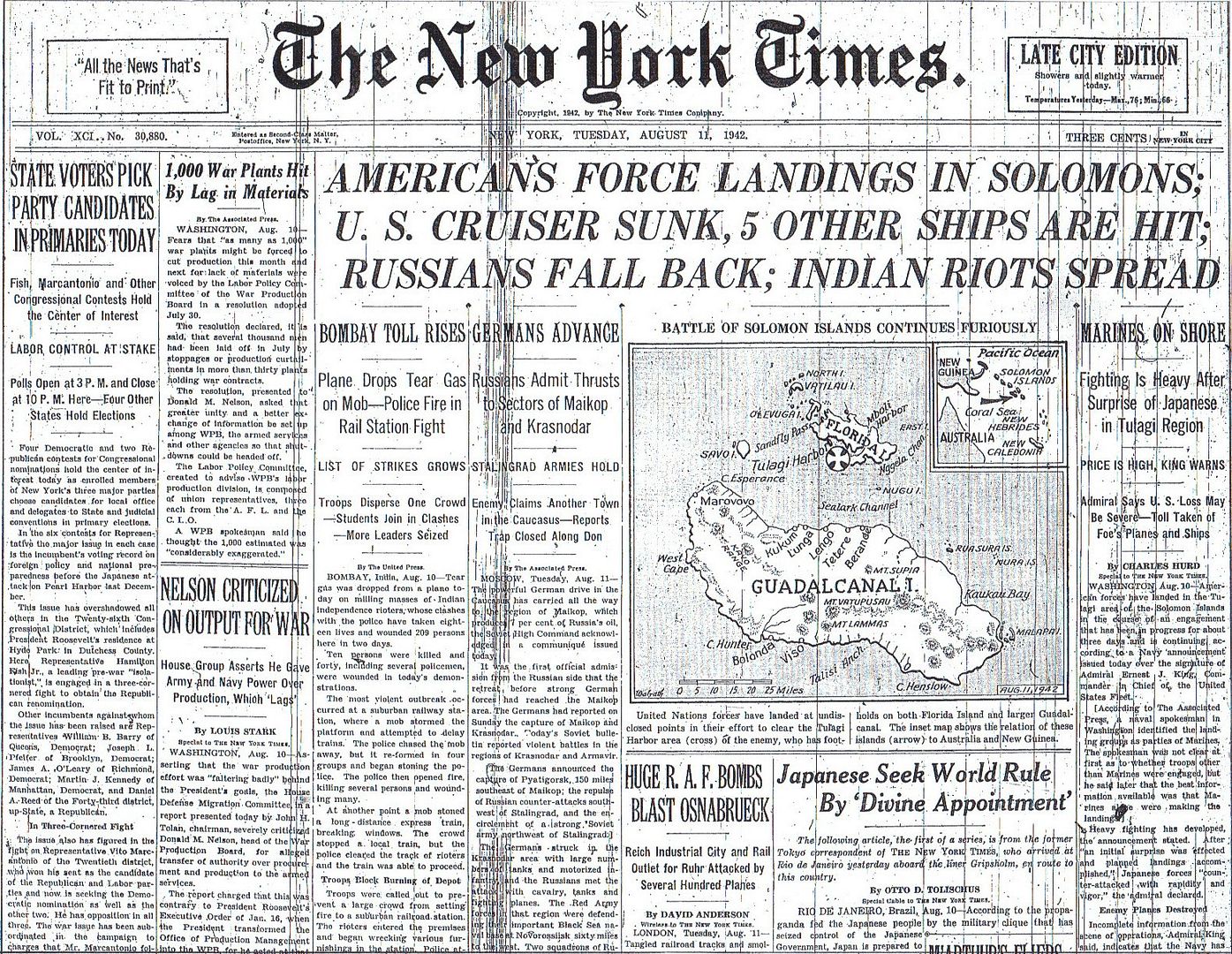
Posted on 08/11/2012 5:31:09 AM PDT by Homer_J_Simpson

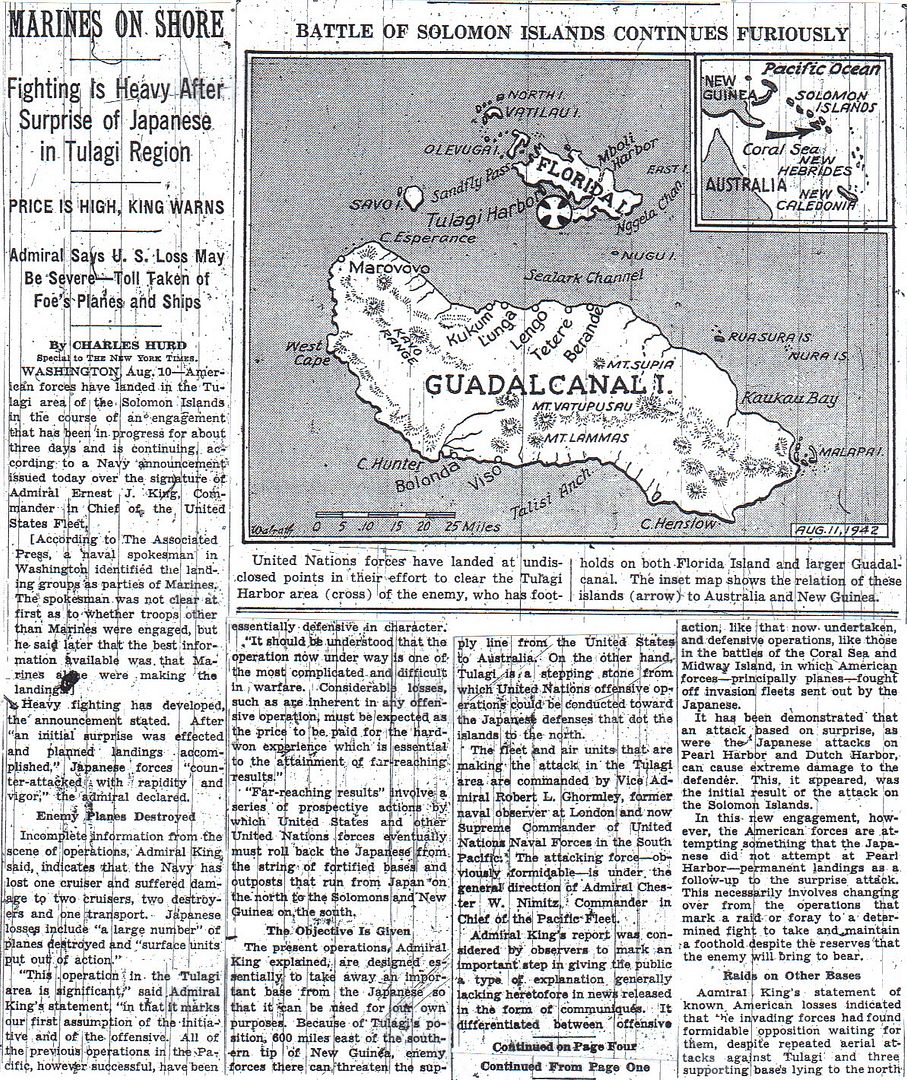
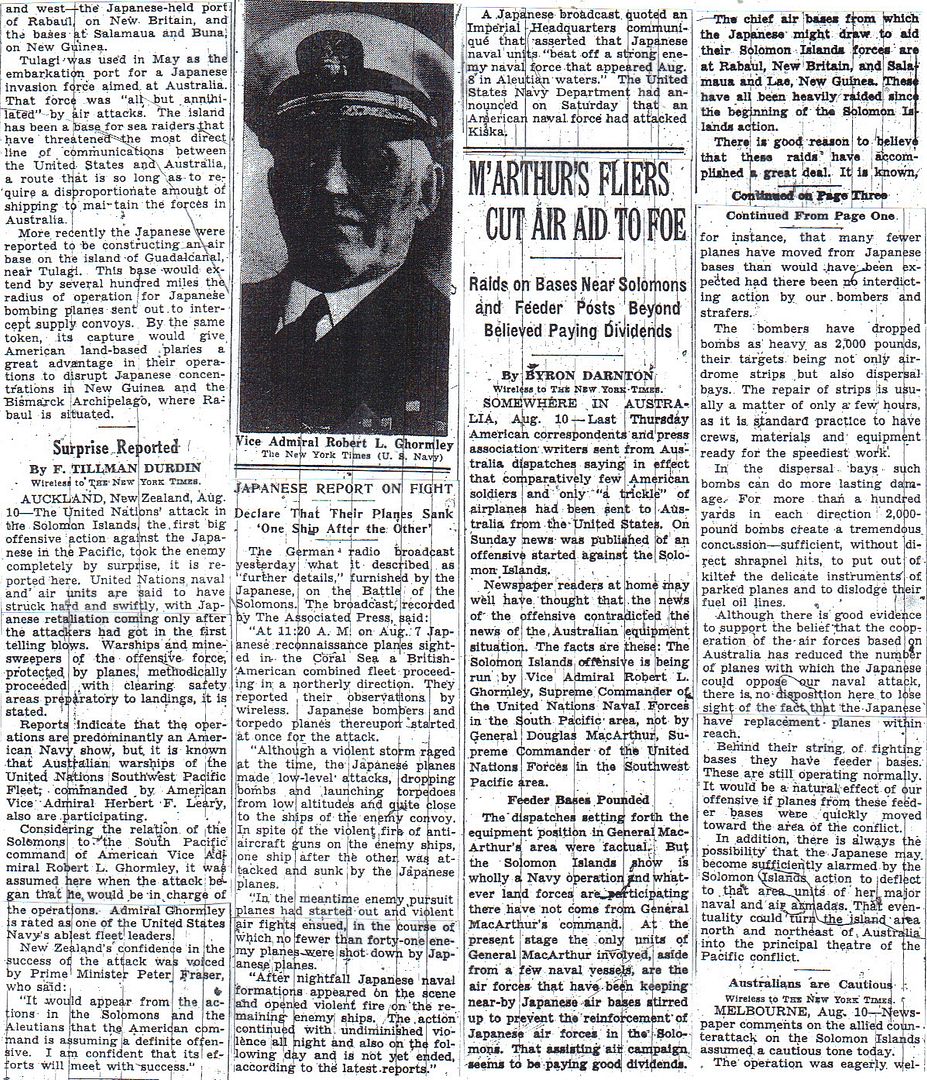
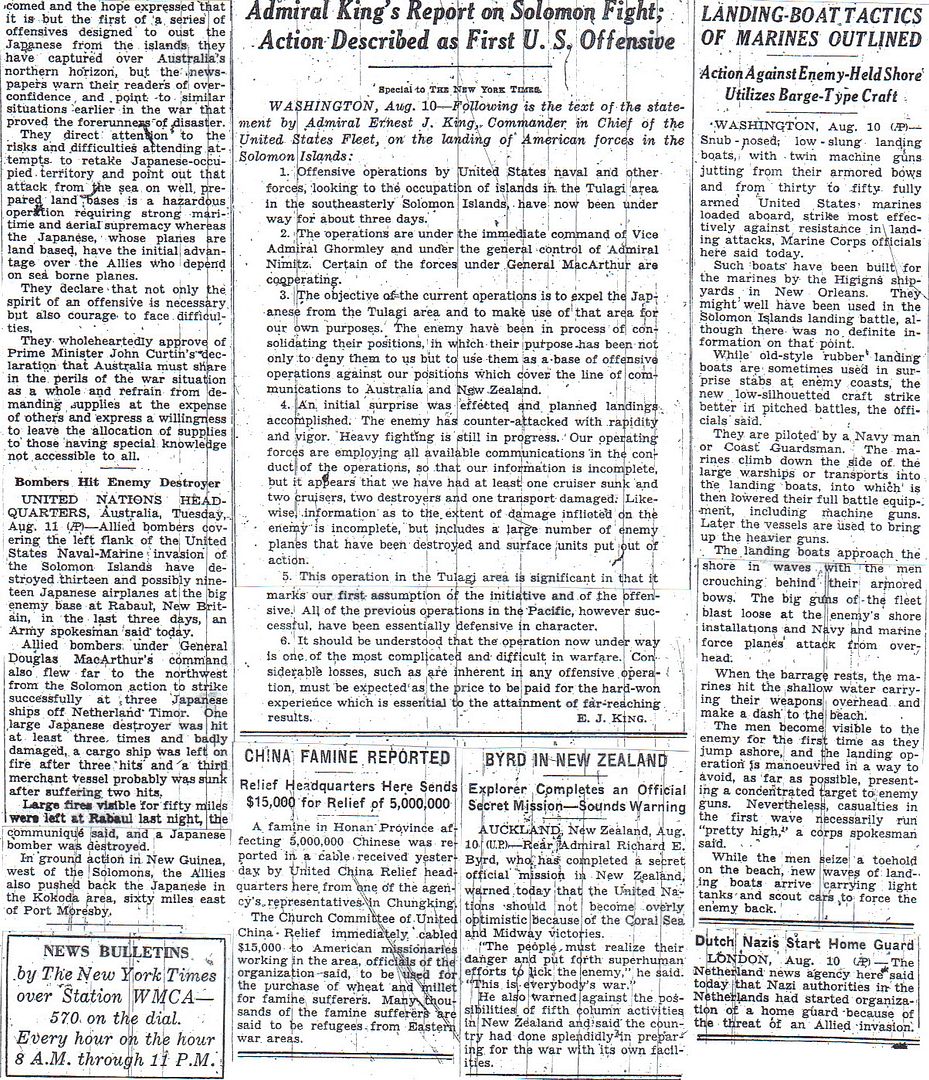
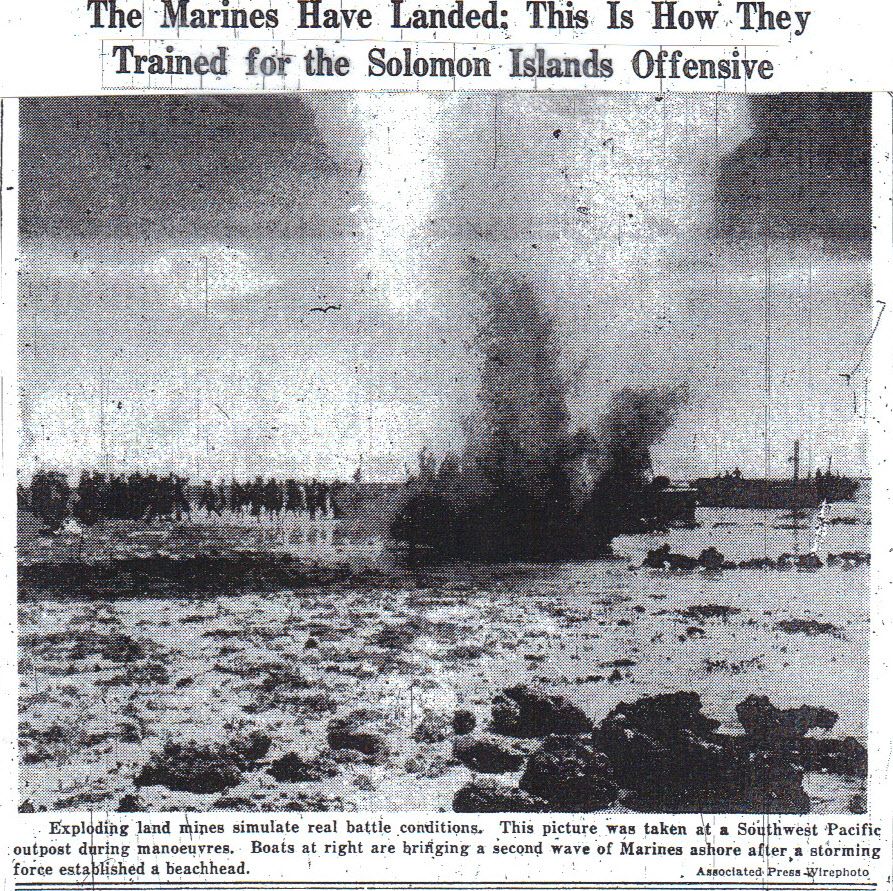


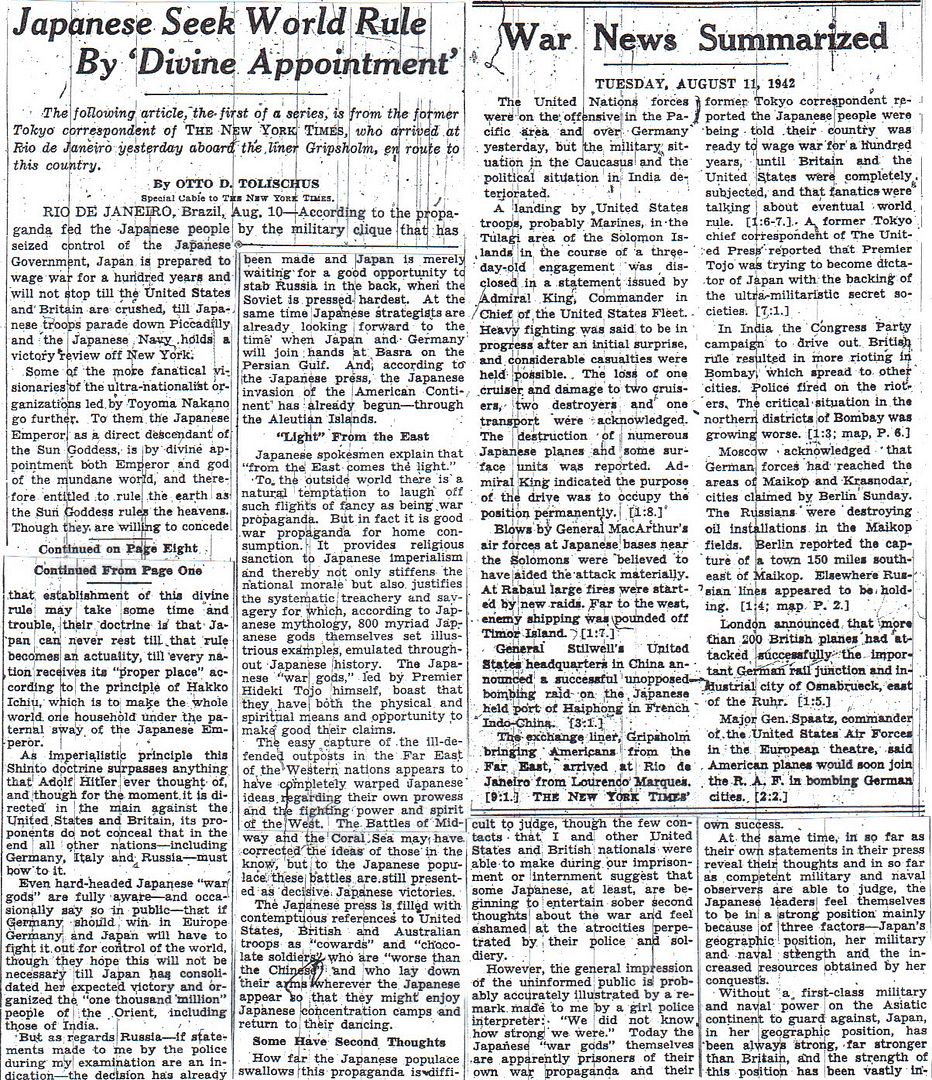
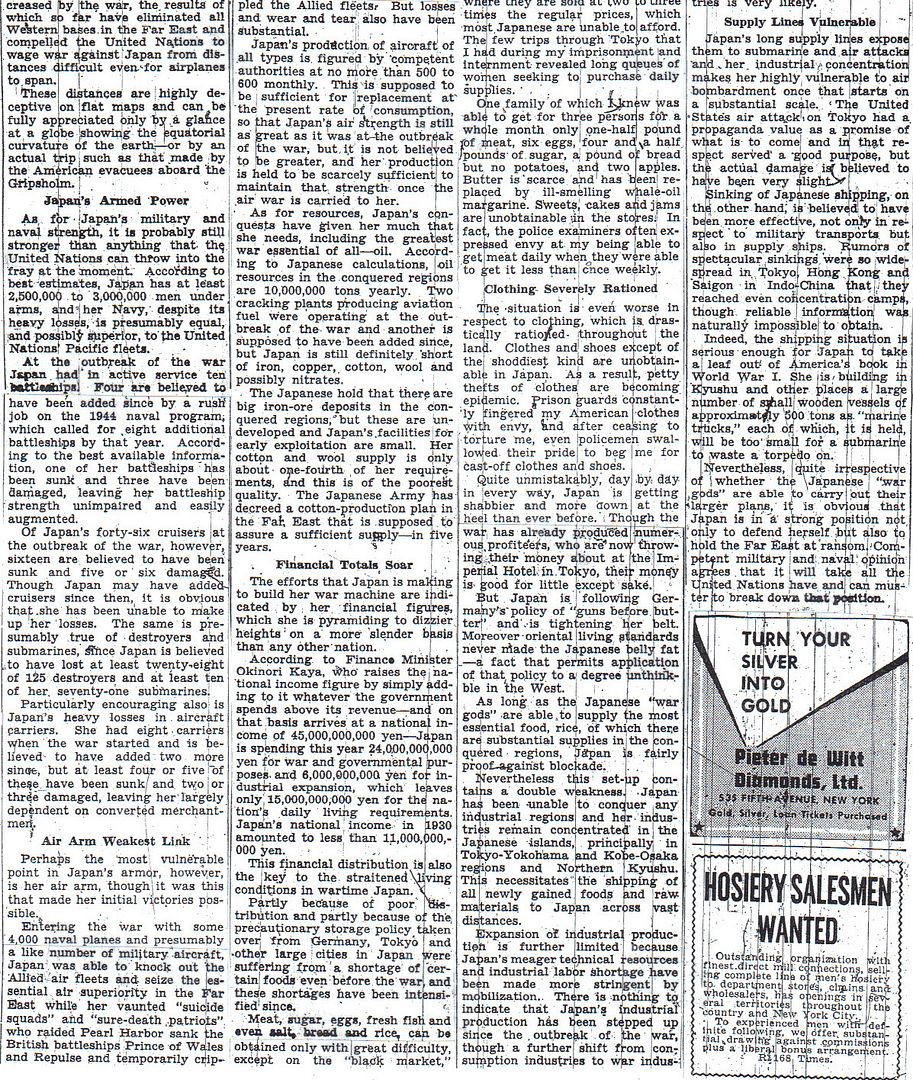
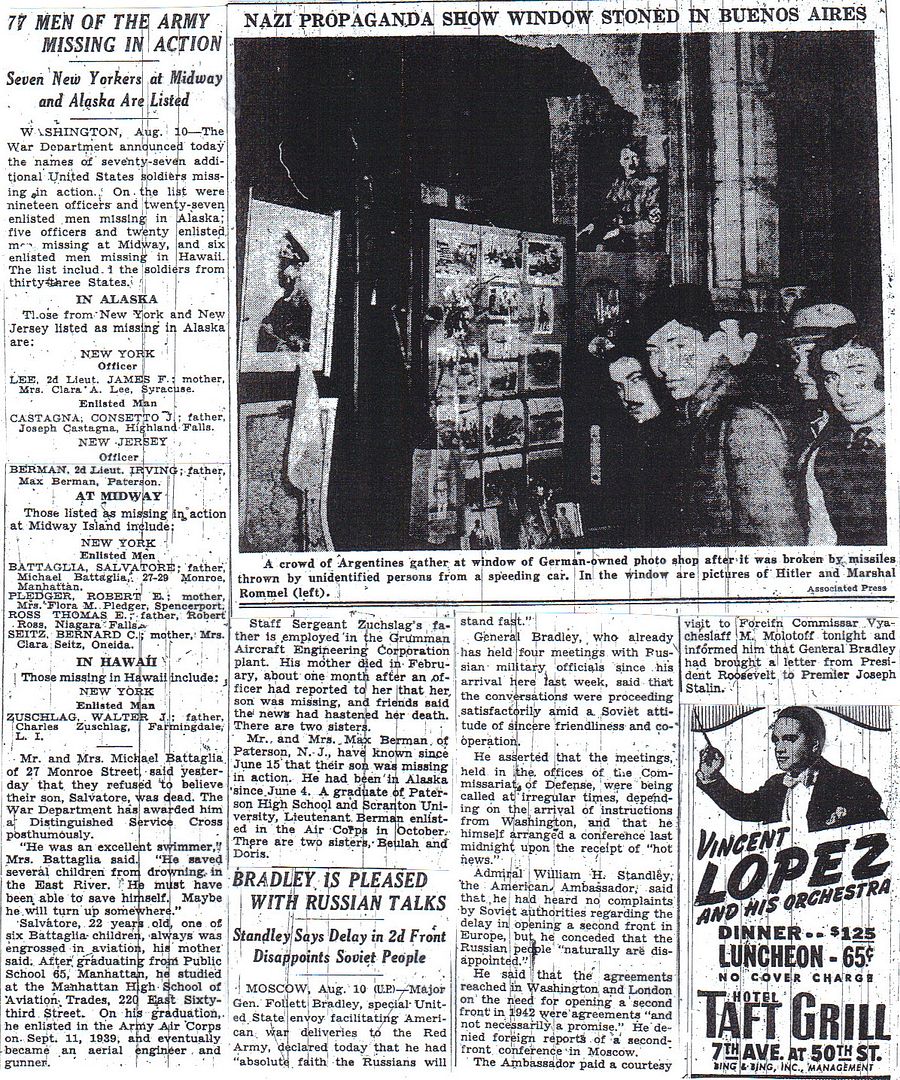
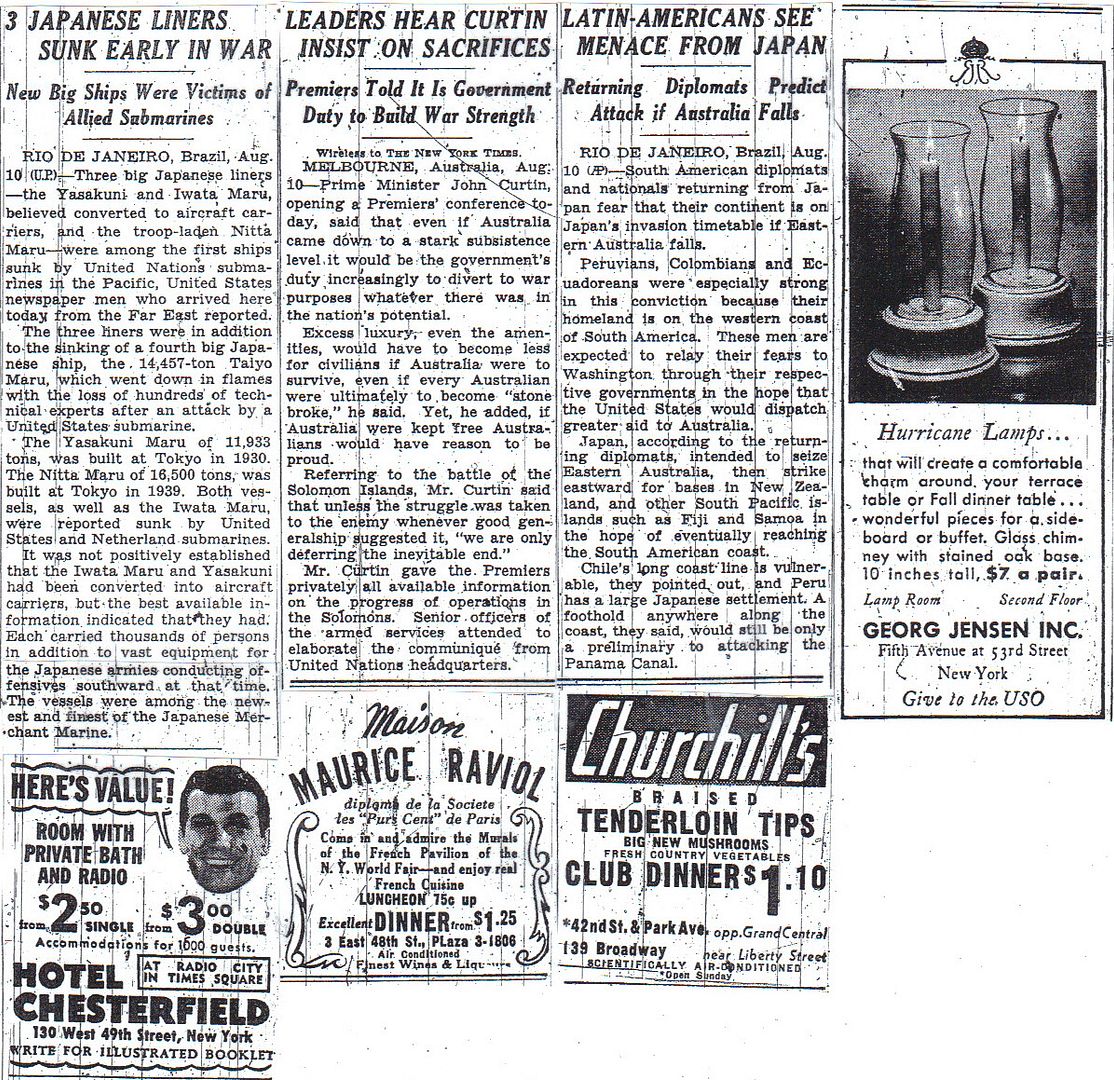
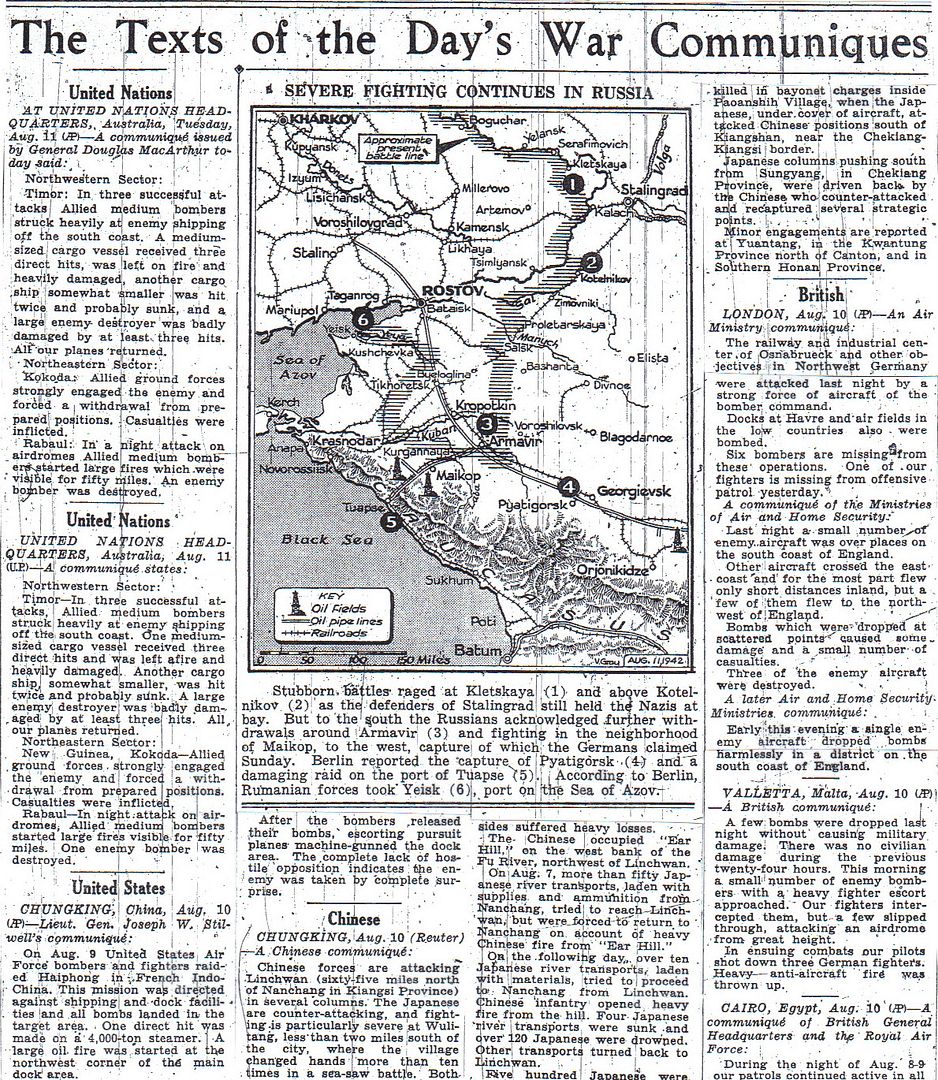
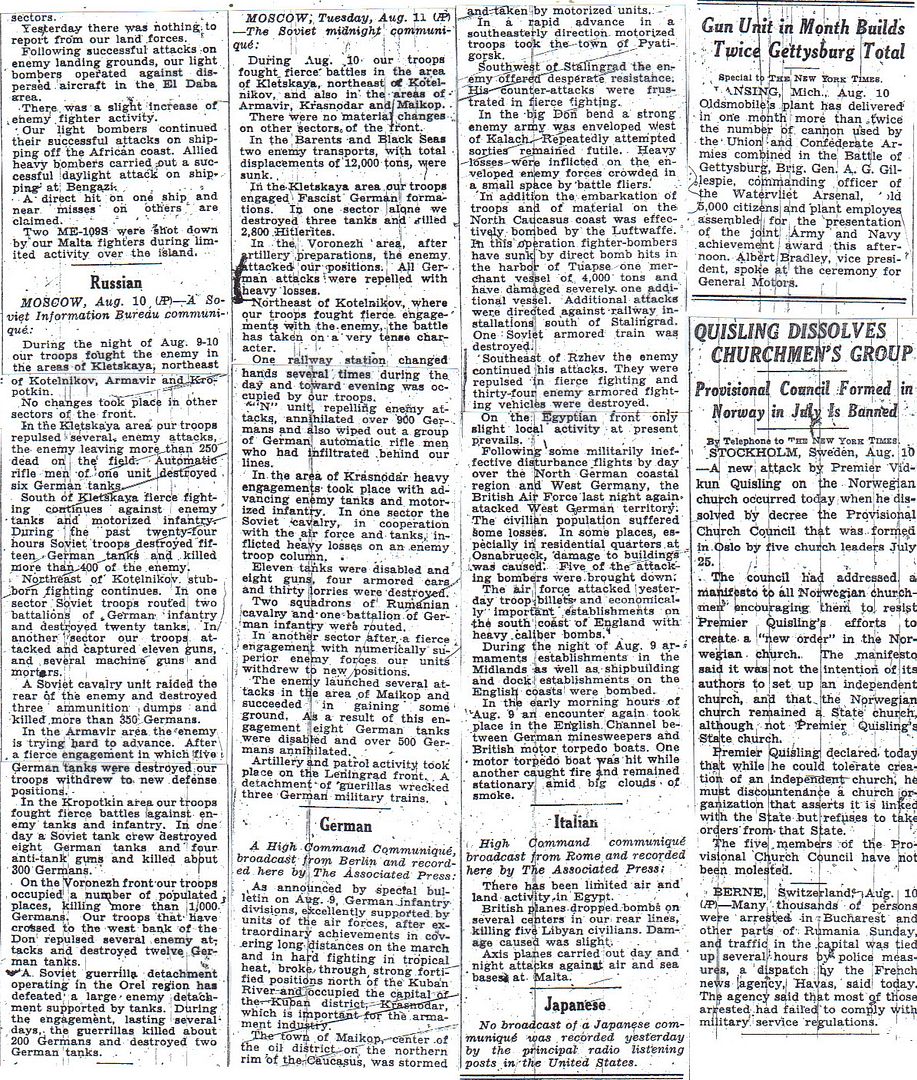
http://www.onwar.com/chrono/1942/aug42/f11aug42.htm
Axis air strikes fail to stop Malta convoy
Tuesday, August 11, 1942 www.onwar.com
Bombs fall on the Malta convoy [photo at link]
In the Mediterranean... First implementation of Operation Pedestal, a program for massive support of Allied convoys in the Mediterranean for the relief of Malta after the last disastrous attempt. Admiral Syfret commands two battleships, four carriers, 32 destroyers and support craft to escort 14 merchant vessels. More aircraft are flown to the island from the HMS Furious which leaves the convoy heading back to Gibraltar. German U-boat U-73 manages to sink HMS Eagle but the air attacks against the convoy are not successful.
In New Guinea... Japanese forces take Deniki on the Kokoda Trail from the Australians. The Australian troops are forced to retreat for five miles towards Templeton’s Crossing near the top of the trail.
In Vichy France... Prime Minister Laval announces that “The hour of liberation for France is the hour of German’s victory in the war.”
On the Eastern Front... In heavy fighting, German troops take Kalach on the west bank of the Don River from Soviet forces.
http://homepage.ntlworld.com/andrew.etherington/frame.htm
August 11th, 1942
UNITED KINGDOM: Orders are issued for the establishment by RAF Bomber Command of a pathfinder force, to locate and illuminate targets for subsequent bombardment.
Sloop HMS Wren launched. (Dave Shirlaw)
ENGLISH CHANNEL: Lt. John Edward Gibbons (1905-71), RNVR, was wounded when his launch was mined but insisted on going to the rescue of a seaman in difficulties. (Albert Medal)
FRANCE: At Compeigne station today the first train carrying freed prisoners crossed with a train loaded with workers en route to the factories in the Reich. On 22 June, Laval had announced the policy of La Releve, introduced by the Germans and aimed at obtaining manpower at all costs. Since not enough “volunteers” had been seduced by the promise of high wages, Hitler asked the Gauleiter Fritz Saukel, who doubles as Reich plenipotentiary for the allocation of labour, to recruit workers in the conquered countries. Sauckel, known as the “slaver of Europe”, demanded 250,000 men, of whom 150,000 had to be qualified workers.
To get the French to accept this bitter news, Laval asked Hitler to release French prisoners in exchange for the workers. The Fuhrer was willing to agree to the deal on the condition that each prisoner be replaced by three workers. Despite all the best efforts of the Vichy government, French citizens did not respond: there was still a lack of volunteers.
Hitler thought he had given the French plenty of time to organize a flow of “volunteers”. But the threat of compulsion was never far away. Even before Laval’s speech Sauckel had issued a directive on 7 May permitting the use of force in recruiting workers in occupied countries. Factories were shut down and round-ups were organized to get together a sufficient number of workers. Despite all this there was little despair at Compeigne station today, as families were reunited with their soldiers after a long absence.
The soldiers permitted to return home for what was called a “holiday from captivity” had been chosen from among the oldest; priority was also given to doctors, and to fathers with more than four children. Laval presided over the welcoming ceremony.
GERMANY: U-316 laid down. (Dave Shirlaw)
U.S.S.R.: German forces capture Soviet positions at Kalach on the west bank of the Don.
MEDITERRANEAN SEA: The carrier HMS Eagle, escorting the Operation Pedestal convoy, is torpedoed and sunk by U-73 which fires off four torpedoes all of which hit Eagle, 65 miles south of Majorca at 38 05N, 03 02E. She sinks after 8 minutes killing 163 men, although 927 survive. The convoy to Malta of Operation Pedestal is 14 merchant ships. The escort, under Admiral Syfret, is 2 BB, 4 CV, 7 CA, and 32 DDs. The escort demonstrates the importance attached to the convoy which includes supplies and aircraft. (Alex Gordon)(108)
Submarine HMS Thorn lost in Mediterranean. (Dave Shirlaw)
NEW GUINEA: Japanese attacks have pushed the Australian Papuan defenders five miles back up the Kokoda Track. From Deniki toward Templeton’s Crossing. They are approaching the summit of the Owen Stanley Mountains in their retreat towards Port Morseby.
SOLOMON ISLANDS: Guadalcanal: 6 IJN A6M “Zekes,” based on Rabaul, strafe US Marines working on Henderson Field.(Jack McKillop)
NEW CALEDONIA: The US 56th Cavalry Brigade (112th and 124th Regiments) arrive complete with their horses. They are the last such US Army unit to be deployed with horses. (Gary Butler)
TERRITORY OF ALASKA: ALEUTIAN ISLANDS: A B-24 Liberator of the US 11th Air Force flies photo reconnaissance over western Semichi Island and the north coast of Attu Island. (Jack McKillop)
CANADA: HMC ML 100 commissioned.
Corvettes HMCS La Malbaie and Saskatoon commence refit Halifax, Nova Scotia. (Dave Shirlaw)
U.S.A.: Admiral King desires Nimitz to move between three and five old battleships to Tongatabu in the South Pacific, “in view Japanese concentration (of heavy ships) directed towards Rabaul.” Capt. Lynde D. McCormick, Nimitz’s War Plans Officer, noted in his war diary, “Cincpac will probably desire not to do that.” (John B. Lundstrom)(225)
The motion picture “Wake Island” is released. This war drama depicting the Marines defence of Wake Island in December 1941, is directed by John Farrow and stars Brian Donlevy, Robert Preston, Macdonald Carey, Albert Dekker, Barbara Britton, William Bendix, Walter Abel and Rod Cameron; Hugh Beaumont, Hillary Brooke, Dane Clark, Alan Hale, Jr.and Richard Loo appear in uncredited roles.
The film is nominated for four Academy Awards including Best Picture, Best Director and Best Supporting Actor (Bendix). IMDB entry.
Brian Donlevy, who played Marine Major Geoffrey Caton in the film, was born in County Armagh, Ireland, and at age 14 (he lied and said he was 16), joined the U.S. Army and served with “Black Jack” Pershing during the Mexican expedition against Pancho Villa. During World War I, he was a pilot with the Lafayette Escadrille and after the war, he spent two years at the US Naval Academy at Annapolis, Maryland, but gave up on a military career for the stage. (Jack McKillop)
An agreement was signed between the United States and Bolivia.
It was announced that the United States and Brazil had agreed to establish a joint defence board, similar to those established with Canada and Mexico. (Dave Shirlaw)
ATLANTIC OCEAN: U-109 sinks SS Vimeria at 10.03N, 28.55W.
At 1427, the unescorted RFA Mirlo was hit on the starboard side in the foreship by one of two torpedoes fired by U-130 about 870 miles WSW of Freetown and the crew abandoned ship in three lifeboats. The U-boat came alongside and took the master on board for questioning. He then asked Kals if he could reboard the tanker and search for a missing man, this was allowed and the master rowed back to his ship and found the seriously wounded able seaman Sverre Gustavsen. After they had recovered him, Kals apologized for having to sink his ship and fired a coup de grâce at 1529, which sank the tanker. He then gave some first
aid items to the master and sent him back in the lifeboat, because he already had two prisoners from Malmanger on board.
After three days in stormy weather, the lifeboats got separated. On 18 August, the 11 men in the boat of the first mate were picked up by HMS Banff and landed in Freetown the next day. On the same day, the 15 men in the boat of the second mate were located by HMS Boreas and landed in Freetown on the 23 August. The remaining lifeboat was found over 100 miles southwest of Freetown by trawler HMS Canna on 20 August and also landed in Freetown two days later, where the injured man was brought to a hospital where he was found to have a very severe skull fracture in addition to other injuries.
Mirlo had left Port of Spain in convoy with twelve other ships, after travelling 300 miles the convoy was dispersed on 3 August and the ship continued alone. At 2032 on 3 August, U-155 fired a spread of two torpedoes at the tanker in grid EE 9773, but the attack was noticed and she turned quickly to starboard. Piening heard one torpedo hit but it did not detonate, while the other passed in front of the bow. The gun crew then fired a shot from the 4-inch gun in the direction of the U-boat and the master ordered a southerly zigzagging course at high speed, shaking off the attacker. (Dave Shirlaw)
"The tragic history of the Warsaw Jewish community resonates with the word Umschlagplatz (transfer point).
During the massive deportations that began in July 1942, an average of 7000 Jews per day were forcibly marched to the Umschlagplatz, a way station on the route to the Treblinka extermination camp.
"During the first ten days of the Aktion, 65,000 Jews were herded through the Umschlagplatz en route to their deaths.
The violence of this operation surpassed anything the Nazis had previously perpetuated in Warsaw.
The SS, German police, and their able-bodied and willing Latvian and Ukrainian helpers prowled the streets of Warsaw in search of their Jewish prey.
"As long as the deportations continued, the Jews of Warsaw clearly understood that survival depended on avoiding the Umschlagplatz, the antechamber to death."
"The Nazis kept meticulous records of the population in the Theresienstadt camp/ghetto.
This July 1942 document charts the ghetto's human gender.
July marked a significant transition at Theresienstadt:
All gentiles were moved out to make room for trainloads of arriving Jews, many of them eminent persons, from Germany and Austria."
"Yeheskel Atlas was a Polish physician and partisan commander. Atlas's entire family died in the Slonim (Belorussia) Ghetto in November 1941.
He remained in the ghetto until July 1942, when he escaped into a partisan company.
Atlas led a number of successful attacks against German installations, but he was mortally wounded in a battle at Wielka Wola, Poland."
"Adam Czerniaków, a balding engineer in his early 60s, headed the Warsaw Ghetto's Judenrat (Jewish Council) for nearly three years.
He wrote almost daily in his diary, which eventually consisted of nine notebooks.
The fifth notebook is missing, yet it remains unclear how any part of this important diary survived at all. Rosalia Pietkiewicz, a Warsaw Ghetto survivor, purchased it from an unidentified source in 1959.
The original copy has been in Jerusalem at Yad Vashem since 1964.
"Czerniaków's reports, many of which begin with the morning temperature, reveal him to be a modest man who worked against impossible odds to save Jewish lives.
His last entry, dated July 23, 1942, states:
"It is 3 o'clock. So far 4000 are ready to go. The orders are that there must be 9000 by 4 o'clock."
The numbers refer to the daily quota of Jews that the Nazis required the Judenrat to assemble for "resettlement."
"All but a relative few of the Warsaw Ghetto's Jews perished in the Holocaust.
A majority were deported to Treblinka and gassed.
Especially distressed by his inability to save the ghetto's children, Czerniaków committed suicide on July 23, soon after writing his diary's final entry."
"In July 1942 22,000 Jews from the area of Rzeszów, Poland, were sent to the Belzec death camp.
Another 1000 Jews were brought to the nearby Rudna Forest and shot.
Here, Jewish women undress before execution.
The Germans usually required the Jews to disrobe so that their clothes could be sent back for use in Germany."
"This propaganda photograph presents a staged view of the living conditions in the barracks of the Dutch transit camp Westerbork.
The plump pillows and crisp sheets that cover each bunk were calculated to assure the Red Cross that inmates were enjoying sanitary and comfortable conditions.
Of course, nothing could have been further from the truth.
Additional insult arose from the facti occupation of the Netherlands brought suffering and hardship to the populace, including this young child.
This photograph is part of a series documenting the German occupation taken by Emmy Andreisse, a member of the Dutch Resistance.
Before the war she had studied photography and graphic design.
During the war years she put her talents to work in "Hidden Camera," a project designed to photograph conditions in the Netherlands under the occupation."
"Jews of Nice sort through a pile of potatoes on the street.
By 1942 many French Jews were reduced to poverty.
The antisemitic policies of the Vichy government deprived many Jews of their livelihoods.
When the deportation of Jews began in July 1942, the administrator of Nice was anxious to get rid of the nearly 8000 Jews who lived under his authority.
In France, most Jews who were deported were foreign Jews."
"The fact that the Ukrainian town of Tluste had relatively few Jews did not mean that the Nazis would leave it unmolested.
Their intention was to kill every last Jew in Europe, and 300 of Tluste's Jews were sent ot the Belzec death camp in August 1942.
Another 1000 were shipped to Belzec on October 5.
This photograph shows the deportation to Belzec."
"Two SS officers from Dachau, Germany, enjoy a break from their duties during a furlough at a local lake.
Many camp officials successfully moved between their jobs as concentration-camp guards and life's normal routines.
Time away from the camps was spent with families and, often, on vacation.
The normalcy with which camp officials approached their jobs is one of the more perplexing facets of the Holocaust.
The vast majority of individuals involved in the genocide of the Jews were 'ordinary men.' "
Disclaimer: Opinions posted on Free Republic are those of the individual posters and do not necessarily represent the opinion of Free Republic or its management. All materials posted herein are protected by copyright law and the exemption for fair use of copyrighted works.